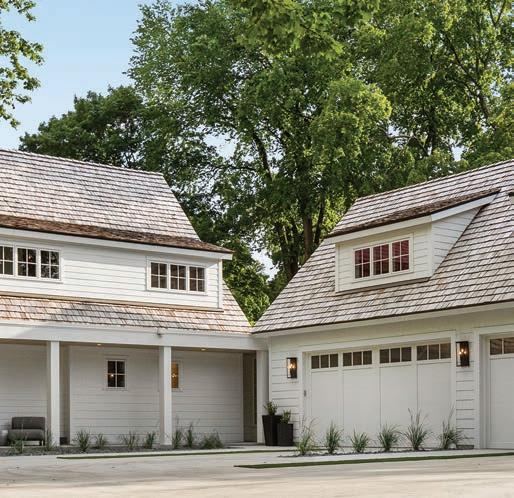






















Diverse support for the legislation re ects urgency to solve statewide crisis
A bipartisan group of legislators gathered in late February to announce the introduction of a sweeping collection of proposals aimed at modernizing Minnesota’s zoning laws and housing approval framework. Named the “Minnesotans for More Homes Initiative,” the e ort is aimed at addressing Minnesota’s housing supply crisis by expanding housing choices while encouraging more environmentally e cient, a ordable and attainable housing options.
“ e lack of housing choices for Minnesotans can be so immensely frustrating, and that dream of owning a home is slipping away. at’s why we’ve put together the Minnesotans for More Homes Initiative to propose solutions that are responsive to what we’re hearing from Minnesotans that are asking for more homes, for more choices, in more places,” said Rep. Mike Howard (DFL, Rich eld).
e initiative’s early momentum draws from the depth of the housing crisis that is impacting all areas throughout Minnesota. With a housing de cit estimated at over 100,000 units of undersupply, all solutions must consider a statewide approach.
“ e simple reality is that every community in Minnesota needs more housing,” said Sen. Lindsey Port (DFL, Burnsville).
e underlying issues impacting Minnesota’s housing supply challenges are rooted in an outdated zoning authority, which hasn’t been substantively updated in three decades. ese policies impact construction costs for new housing supply, which are currently the highest in the region.
e legislation has attracted support from diverse coalitions, ranging from the housing industry to environmental and community organizations to labor unions and business groups.
“ e growing coalition of supporters, coming together at a time when so many issues divide us, tells us that the solution is to build more homes of all types, especially those at a ordable price points,” said James Vagle, CEO of Housing First Minnesota.
e initiative receiving bipartisan leadership with broad coalition support re ects how many key areas are impacted by housing a ordability and homeownership.

Proposed legislation aims to eliminate exclusionary parking mandates
PAGE 6
Builders & Remodelers Show brings together industry influencers
PAGE 14
Eleventh new construction home for veterans complete
PAGE 16
One of the greatest concerns for the residential construction industry over the last few years has been a dwindling workforce.
To address this challenge, Housing First Minnesota announced a new strategic partnership with Building Talent Foundation.
Building Talent Foundation is a national nonpro t organization founded by the Leading Builders of America, with the purpose of addressing the acute and persistent talent shortage across residential construction. Minnesota is the 20th market in which Building Talent Foundation has a presence.
As we move into the rst quarter of 2024 there are encouraging signs that the Legislature is going to have a major discussion about housing a ordability and the future of homeownership in Minnesota.
Our under-supplied market hasn’t built an adequate supply of new homes for over 15 years, and that has snowballed into a serious challenge. Today we are over 100,000 housing units short, which impacts all corners of the housing ecosystem.
Five years ago, the common response to this challenge from leaders was that builders were choosing to build at higher price points, presumably for nancial reasons. But over the past few years that response has changed. e growing consensus among legislative leaders is that the outdated zoning and housing approval process is the primary issue holding back a full menu of housing options.
As an industry, we know that not all of us will build starter homes if they are allowed, but we know that enough of us will, and that our
HousingIndustryNews.org
industry and mechanics of the market will bring innovation and housing choices to Minnesotans.
ere are good reasons for the Legislature to be considering this now. In addition to the large undersupply, the basics of property rights have come into the discussion. Our homeowners know best what works for their budgets and their households.
Speaking of households, the demographic data that should drive policy discussions like this shows just how much has changed since the last time Minnesota updated its zoning laws 30 years ago. e number of single-person households has never been higher, while the overall number of household members continues to adjust downward.
Our industry serves our customers, and when we are free to build a home that suits their needs and budgets, everyone bene ts.
I’m hopeful that the encouraging start to 2024 paves the way for generational changes to Minnesota’s zoning and housing approval laws. We know that change is di cult and that

Go to HousingIndustryNews.org for subscriber exclusives, breaking housing news and features.
March 2024,

there will be some who believe the status quo is working well enough and that no major changes are needed.
e housing industry knows that the status quo isn’t working well for Minnesotans, and I look forward to making our voices heard in 2024 as this process moves ahead.
Let’s Build it Together, Art Pratt
2024 Housing First Minnesota Board Chair
Subscribe
Stay up to date on the latest housing news. Subscribe to our newsletter at HousingIndustryNews.org
Advertising
For advertising information, rates, editorial calendar and production specifications, contact: Brad Meewes at 651-269-2399 (Brad@HousingFirstMN.org) or Kori Meewes at 612-801-9874 (Kori@HousingFirstMN.org)
News Tips
Have an idea for a story for our next issue?
Contact Katie Elfstrom at Katie@HousingFirstMN.org or send your story to Info@HousingIndustryNews.com
Follow Us
Be a part of the growing housing movement in Minnesota. Follow us @housingindustrynews_mn facebook.com/HousingIndustryNewsMN
the country,
HERE ARE SOME OF THE LATEST QUOTES ON THE STATE OF THE INDUSTRY:
Homeowners have told us repeatedly as of late that high mortgage rates are the top reason why it’s both a bad time to buy and sell a home, so a more positive mortgage rate outlook may [incentivize] some to list their homes for sale, helping increase the supply of existing homes in the new year.
MARK PALI FANNIE MAEe sustainable solution is to make it easier to build housing. at way we can actually start heading in the right direction with a ordability and have that be sustainable and not just a short-term interest rate phenomenon.
DARYL FAIRWEATHER
REDFINere can be some discussion around statewide frameworks to allow for more of those types of units to be built, reducing and eliminating lot size requirements. Being able to build smaller homes on smaller lots, which would be less expensive and provide more housing options and more a ordable price points.
PAUL EGER MINNESOTA REALTORSMinnesota has a massive housing shortage that is driving up the cost of housing for everyone. Now is the time to legalize more housing choices for Minnesotans so we can build more of the homes that Minnesotans desperately want.
MINNESOTA REP. MIKE HOWARD DFL-RICHFIELD








All the uncertainty over the past few years has just reinforced the desire for homeownership, but land and material prices have gone up too much. So something has to give, and what builders are doing now is testing the market and asking what is going to work.
ALI WOLF ZONDA











A Technical Advisory Group (TAG) has completed its seventh month of its review of the 2021 International Energy Conservation Code (IECC) in Minnesota. e TAG has been meeting since August to review the 2021 IECC and proposed amendments.
Minnesota is on the 2012 IECC, with Minnesota amendments, yet remains the most energy-e cient, high-volume state in the nation, according to data from RESNET.
Much of the proposed amendments have focused on increasing e ciency above the requirements of the 2021 code.
Homebuilders were opposed to arraying too much from the model code. In letters to the TAG, Housing First Minnesota and the Central Minnesota Builders Association both highlighted how proposals on smaller homes and townhomes would make these units more expensive and harder to build at a time when a ordability and inventory are challenged in the market.
“Keeping the performance path outlined in the 2021 Energy Code intact as a viable option in Minnesota is crucial for homebuyers and builders,” said Nick Erickson, senior director of housing policy for Housing First Minnesota. “Minnesota is home to a few innovative leaders on energy e cient homes and without the performance path, our ability to lead on housing innovation will be lost, along with housing a ordability and access.”
Once a review of the 2021 code is complete, the TAG will likely review the 2024 IECC.
Other I Codes
Technical advisory groups will soon be announced for the remainder of the so-called “I-Codes” published by the ICC. is includes:
• Mn Rules Chapter 1300, Building Code Administration & Mn Rules Chapter 1302, Construction approval
• Mn Rules Chapter 1303, Minnesota Provisions
• Mn Rules Chapter 1305, 2024 IBC/Commercial Building Code
• Mn Rules Chapter 1307, Elevators and Related Devices
• Mn Rules Chapter 1309, 2024 IRC/Residential Building Code
• Mn Rules Chapter 1311, 2024 IEBC/Existing Building Code
• Mn Rules Chapter 1323, ASHRAE Standard 90.1-2022/ Commercial Energy Code
• Mn Rules Chapter 1341, 2024 IBC/Accessibility for Buildings and Facilities Code
• Mn Rule Chapter 1346, 2024 IBC & 2024 IFGC/ Mechanical Code
• Mn Rules Chapters 1305/7511, 2024 IBC/IFC Compatibility
• Mn Rules for Structural Review of the 2024 IBC/IRC/ IEBC/MN Rule 1303
e biggest change for homebuilders is expected to be moving the Residential Energy Code, Chapter 132, into Chapter 1309 as a new section of the code. Appointees and meeting schedules for these TAGs were not available at the time of printing.
e Board of Plumbing’s Ad Hoc Rulemaking Committee began its work reviewing the 2024 Universal Plumbing Code. Meetings are being held monthly to review proposed changes to the Minnesota Plumbing Code. Following the completion of rulemaking on the 2026 Minnesota Building Code, the rulemaking sta at the Minnesota Department of Labor and Industry are expected to complete work on the new Plumbing Code.


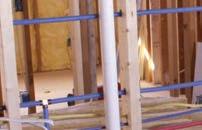


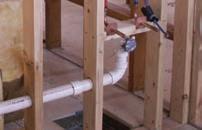





In November 2020,
A three-judge panel from the Minnesota Court of Appeals heard oral arguments in the homebuilders’ challenge to building permit overcharges in the cities of Corcoran and Dayton, Minn., on Jan. 17.
In July 2023, Hennepin County Judge Francis Magill ruled that Housing First Minnesota, a statewide builders association, does not have legal standing to continue its suit. Housing First Minnesota appealed, and the two cases were consolidated into a single appeal by the court.
From 2018 until 2021, Housing First Minnesota alleges the city of Corcoran collected more than $2.5 million in surplus building permit revenue, which was then placed into the city’s general funds and was used to pay for municipal development projects. According to court lings, the city of Dayton was accused of over-collecting $2.9 million for the years 2018-2021, with all but $200,000 diverted to the city’s 409 Fund.
A decision from the Court of Appeals is expected to be available by mid-April.
Do municipal fee schedules nullify or exempt local governments from fairly assessing fees? e U.S. Supreme Court will be answering that question before their term expires in June.
In January, the nation’s highest court heard oral arguments in Sheetz v. El Dorado County, a case from California examining if a local government can use its fee schedule to bypass the so-called Nollan-Dolan standard. Named after two di erent Supreme Court cases, this standard places guardrails on the taking of land and money in development approvals.
California property owner George Sheetz bought a plot of land in El Dorado County in 2013, intending to place an 1,800-squarefoot manufactured home on the property. When he applied for a permit to proceed forward with the structure, the county assessed him a $23,420 Tra c Mitigation Impact Fee as a condition for approval. Unlike Minnesota, street impact fees are legal in California. Sheetz challenged the appropriateness of the fee as it violated the Nollan-Dolan standard.
For the past 30 years, these two cases, Nollan v. California Coastal Commission (1987) and Dolan v. City of Tigard (1994), outlined the extent to which government can impose exactions, impacts fees or taking of land on private property. Under this standard, government entities must satisfy a heightened level of scrutiny when imposing conditions on
land-use permits that are tied to the granting of development rights.
e Nollan-Dolan standard requires that there be an essential nexus between the government’s condition and the impact of the proposed development, as well as a rough proportionality between the condition imposed and the anticipated e ects of the development. is standard aims to prevent governments from exacting excessive or unrelated demands from property owners seeking to exercise their property rights, while also allowing governments to regulate development in the public interest.
In an amicus brief supporting Sheetz, the Mercatus Center at George Mason University said the Court should no longer allow legislatively enacted fee schedule exactions to be excluded from the Nollan-Dolan standard.
“Exactions that adhere to this Court’s nexus and proportionality standards can be a helpful tool for localities seeking to balance residents’ nancial concerns with the economic and social need for housing construction in response to rising demand,” the brief said. “However, when impact fees exceed these standards, they can worsen housing a ordability and impede housing production while leaving many of the persons who are harmed — housing developers and the people who would have moved into new housing from other jurisdictions — without recourse through the electoral process.”








A ruling in favor of Sheetz would create a new precedent that could extend across any type of development-related fees. Municipalities would potentially no longer be able to


rely on development fee schedules and would ensure each taking is assessed on a per-project or per-home level.
e Supreme Court will issue its opinion before the term expires at the end of June.
Proposed legislation in the Minnesota Senate aims to eliminate minimum parking requirements for housing projects statewide. If signed into law, the “People Over Parking Act” would prohibit local governments from imposing minimum parking mandates for residential, commercial and industrial properties.
Introduced by Sen. Omar Fateh (DFL, Minneapolis) at a press conference in January, the bill has been met with support from industry and labor partners including Housing First Minnesota, Sierra Club, the Minnesota Housing Partnership and more.
“A minimum parking mandate is a requirement that whenever someone builds a new building, or renovates an old one, they are forced to build a certain number of parking spots. Whether they need them or not,” Fateh said.
Existing parking would not be eliminated, but according to Fateh, the proposed legislation
would grant landowners, businesses and property developers greater exibility in determining the number of parking spots they need.
“Parking mandates are among the most exclusionary land-use tactics in housing, and a policy which increases housing costs in Minnesota,” said James Vagle, CEO of Housing First Minnesota. “Allowing property owners to choose their parking needs is one of many meaningful zoning and land-use reforms that we hope the Legislature tackles this session.”
In many growing cities there can be requirements to build three-car garages. Under the language of this bill, it would be up to homeowners to choose how many garage stalls they would like. is exibility has the potential to save up to $40,000 per house, according to speakers at the press conference who spoke in support of the bill.

CONTINUED FROM PAGE 1
“We need to build a lot more housing, but if we don’t build it in the right places, we will create more sprawl, make tra c congestion worse, and increase both air pollution and transportation-related greenhouse gas emissions,” said Rep. Larry Kraft (DFL, St. Louis Park), the House author of the legislation.
e focus on diversifying housing choices and the positive environmental impact spans both the House and the Senate, where the respective bills will be heard over the coming weeks.
“ is housing model not only provides diverse housing exibility but also fosters environmentally friendly communities,” said Sen. Nicole Mitchell (DFL, Woodbury), the Senate author of the legislation.
Beyond the supply and smart resource conservation embedded in the proposals, several legislators and supportive organizations cited Minnesota’s troubling legacy of racial equity gaps in homeownership as a driving force behind the need for zoning modernization.
“Minnesota has one of the nation’s worst racial equity gaps in homeownership, and decades of exclusionary zoning practices have been a key driver of this injustice,” said Rep. Alicia ‘Liish’ Kozlowski (DFL, Duluth), a co-author of the legislation. “Our common-sense and bipartisan plan would curb legacy exclusionary policies that are hindering our ability to close the gaps, bolster our tax bases and strengthen our economy, and ensure all our neighbors have the freedom to nd an a ordable home to rent or buy in a community they love, and the time for action is now.”



Committee
Lyman Roofing & Siding has been proudly serving the pro builders and remodelers in Upper Midwest area since 2006. At our climate controlled facility in St. Louis Park, we produce pre-finished siding in variety of custom colors and finishes, providing added value for architects, home designers, interior designers, custom home builders and contractors, ready for shipping to your jobsite.
•State of the art coating process with over 1200 colors
•Capacity to finish ALL siding accessories
•Huge fleet to accomodate your schedule
•Same day pick up for stocked trim & siding colors


• Our drying process cures the paint for a high quality durable finish.
• Backed by 15 or 30 year warranties vs field painting with no warranty.
Looking for a business partner to help save you time and money?
Contactustodayat612-430-7200.
What would you like to focus on during your term as CMBA’s president?
I would really like to focus on growth in our membership. We started a membership drive late last year, and we have already seen our membership grow..
What changes would you like to see at the state legislature to address the housing crisis in Minnesota?
State mandates, regulations, fees and taxes contribute signi cantly to the cost of building new housing. A ordable houses for many Minnesotans keep getting less a ordable every year due in part to legislative regulations and building code changes. It is time we stop adding to the cost of these houses and perhaps see what we can reduce or eliminate to work toward making homes more a ordable and close the gap in our housing shortage.
As a millennial, you know that homeownership access has never been more challenging. What inspires you to preserve homeownership for future generations?
ere is something to be said about the independence and satisfaction that someone gets when they own something. at feeling of pride in owning a home often leads to growth within families, neighborhoods and the community in which that person lives. Homeownership also is one of the most important opportunities for building wealth. It’s a win-win!
What is one thing you wish more people understood about homebuilding and development?
It is often hard and rewarding for both the building contractors and homeowners. Many challenges come with construction of almost any kind, but being able to take ideas and concepts, work with a team of people who share the same goal, and then watch a blank piece of land turn into a development full of homes is truly rewarding for builders and homeowners alike!
How did you get your start in the building industry?

Jack Brandes 2024 CMBA President, Vice President of Lumber One Avon
I have really been a part of this industry all my life. My grandfather, Terry Schmid, purchased the business from his father and uncle in 1962. Both my mother, Barb Brandes, and uncle, Ted Schmid, followed in my grandfather’s footsteps, and I saw the opportunity to follow in theirs. I’m proud that industries like ours keep our local economy strong by building communities and creating jobs.

For Minnesotans on the hunt for their next house, home tours serve as an opportunity to explore neighborhoods, meet local builders and remodelers, and nd inspiration. As housing inventory in Minnesota remains low, the tours allow buyers to open the doors to more homes that t their must-have lists.
Minnesota has no shortage of home tour events happening throughout the spring and summer, put on by associations across the state.
UPCOMING HOME TOURS
Spring Parade of Homes by Housing First Minnesota
March 7 – April 8 | Fridays – Sundays | 12-6 p.m.
Spring Tour of Homes by Central Builders of Minnesota Association
March 15-17 & 22-24 | Friday 4:30-7:00 p.m. | Saturday & Sunday 12:00-5:00 p.m.
Spring Remodelers Showcase by Housing First Minnesota
April 6-8 | Friday – Sunday | 12-6 p.m.
Spring Showcase of Homes by Rochester Area Builders, Inc.
April 20-21 & 27-28 | Saturday & Sunday | 12-5 p.m.
Spring Parade of Homes by the Building Industry Association of the Red River Valley
May 4-6 & 11-13 | Saturday & Sunday 12-5 p.m. | Mondays 3-7 p.m.
Summer Artisan Home Tour by Housing First Minnesota
June 7-23 | Fridays – Sundays | 12-6 p.m.
At Xcel Energy, we’re not waiting for the future, we’re busy building it. When you build to a higher standard than code, you can join us in building a sustainable future.
High e ciency homes provide your customers with increased comfort and healthier indoor living spaces while using less energy and retaining their value longer than built-to-code houses. When you can deliver a more comfortable, e cient
home that will save your customers energy and money, you position yourself as a high-performance builder to give yourself a competitive edge.
We o er incentives to builders who construct houses built to the Environmental Protection Agency’s newest ENERGY STAR® Homes Version 3.2 and the new ENERGY STAR NexGen Certi cation Program requirements.



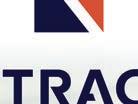



















We also collaborate with the Energy and Environmental Building Alliance (EEBA) and Construction Instruction (Ci) to o er training opportunities to builders who are ready to construct high-performance homes that stand out from the pack. Our courses empower builders to build to higher energy standards and to provide the knowledge needed to meet both the new Department of Energy’s latest Zero Energy Ready Homes Version 2 standard and ENERGY STAR NextGen program requirements.
Join us at Housing First Minnesota in Roseville for the next ZERH and ENERGY STAR NextGen builder training April 30-May 1, presented by Gord Cooke. is training will provide builders with the knowledge required to construct high-quality, high-performance Zero Energy Ready homes. During this two-day training, you’ll learn:
• All of the elements required to build a ZER home.
• How to select the most cost-e ective materials.
• How to nd practical solutions for building in speci c climate zones.
• How to integrate renewable energy into your build.
• And more.
Builders in Xcel Energy’s service territory who are enrolled in the E cient New Home Construction program may be eligible for the reimbursement of course fees. Register now by visiting EEBA.org and selecting “Net Zero Builder Training” from the events tab.
• Learn from the best! Courses taught by 25+ top industry experts.
• 50 online courses! More individual courses than any other provider! No cookie cutter learning here - select courses based on your specific needs and interests and take them anytime and anywhere.
• Easy-to-stream videos. Similar to watching a video on YouTube, Contractor U courses make learning simple and accessible.
• Widest range of topics! Courses covering energy, business management, building science, residential codes, legal, safety, and so much more.
• Courses approved for MN contractors by the Minnesota Department of Labor & Industry. Plus select courses approved for MN building o cials and WI contractors.
• The gold standard in continuing education. Contractor University has been nationally accredited by the International Accreditors of Continuing Education and Training.
• Study aid for the pre-license exam. Know someone who wants to become a licensed contractor? Contractor U o ers a prep-course filled with first-class resources to help you pass the real exam.
• Highly recommended by peers. Discover why our courses receive great feedback. SPONSORED BY



Metro
Twin Cities homebuilders kicked o 2024 with a positive month of single-family construction activity. Metro builders pulled permits for 359 single-family homes during the month of January, a 10% increase from the same time last year. Activity in the multifamily construction sector, however, continued to see decreases in overall activity with permits pulled for only 182 units – a 57% decrease compared to this same time last year.
























Employment Update
Minnesota’s non-seasonally adjusted unemployment rate ticked up to 2.6% in December, according to the Minnesota Department of Employment and Economic Development. This is compared to the November rate of 1.9%.
The national unemployment rate in December was unchanged month-over-month at 3.5%. Construction employment in Minnesota recorded a gain of 1,200 jobs since last year.
e Twin Cities housing market is among the top performing in the country but lags behind its Midwest counterparts.
According to Zonda’s Q1 2024 Housing Forecast, 37% of housing markets in the U.S. are overperforming the national average.
Zonda’s Market Ranking (ZMR) accounts for both sales pace and volume, is seasonally adjusted and is taken as a percentage relative to a baseline market average. e Minneapolis-St. Paul housing market ZMR was ranked as average in January while Chicago and Indianapolis were both ranked as signi cantly overperforming.
Much of the overperformance in the Midwest was led by the move-up and luxury home market segments. Minneapolis-St. Paul had the lowest entry-level home sales rate of any market, according to Zonda. e Twin Cities metro average of 1.5 homes per month sales rate compared to Chicago with a 2.5 sales rate and Indianapolis with a 2.0 entry-level sales rate.
e Twin Cities housing market is currently sitting 4% below the 2020 peak in home construction activity. With prices and interest rates, the market has seen a rising share of the attached product.
With the Twin Cities, Chicago and Indianapolis all posting quarter-of-quarter gains in start activity, Zonda predicts the entire Midwest region will continue to strengthen as consumers regain con dence.




ree housing economists joined together at the International Builders Show (IBS) presented by the National Association of Home Builders (NAHB) in February to provide their outlook on the 2024 housing market and economy. Ali Wolf, chief economist with Zonda; Danielle Hale, economist with Realtor. com; and Robert Dietz, chief economist of NAHB, all gave their insight and predictions to a packed room at the Las Vegas Convention Center.
Hale reported that a ordability is the key factor holding back the overall housing market, with home sales at their lowest level since 1995, even though we have a much larger population.
“ e monthly mortgage payment for a median-priced active home listing reached a high of $2,405 in October 2023, which represents 29.1% of the share of a median family income,” said Hale. “In January 2024, the payment amount was $2,101, or 26.8% of a median family income.”
Hale also noted that our housing market is drastically undersupplied and estimated that we need a production surge of over 50% to help balance the housing market. e shortage of homes has led to growth in new home sales which now make up the highest percentage share of the total market on record.
Wolf noted that incentives and rate buydowns are also leading more buyers to choose to build new. Wolf reports that the baby boomers are back on top as the highest share of buyers from 2023, and with rising rates, cash buyers are back at a 9-year high.
“Eighty percent of builders anticipate starting more homes this year, and more than half (51%) expect that starts will be up more than 10% compared to 2023,” said Wolf.
Zonda’s measurement of lot supply shows that nationally we are signi cantly undersupplied when it comes to lots. For the rst time in 6 months, land prices are rising again.
According to Dietz, building materials are at with lumber pricing down, similar to April 2020, and well below the peak in 2021. He expects lumber prices will rise in 2024 as building increases.
“By the end of this year, NAHB projects mortgage rates will be below 6.5%, and by the end of 2025, we expect rates to be in the high 5% range,” said Dietz. “ is is good news for builders, housing demand and housing a ordability.”
Dietz forecasts growth for single-family homes through 2027. At that point he expects demographics to start to move against the industry and by 2030 there will be a slowdown in construction. He also predicts an increase in teardowns with the nation’s aging housing stock.


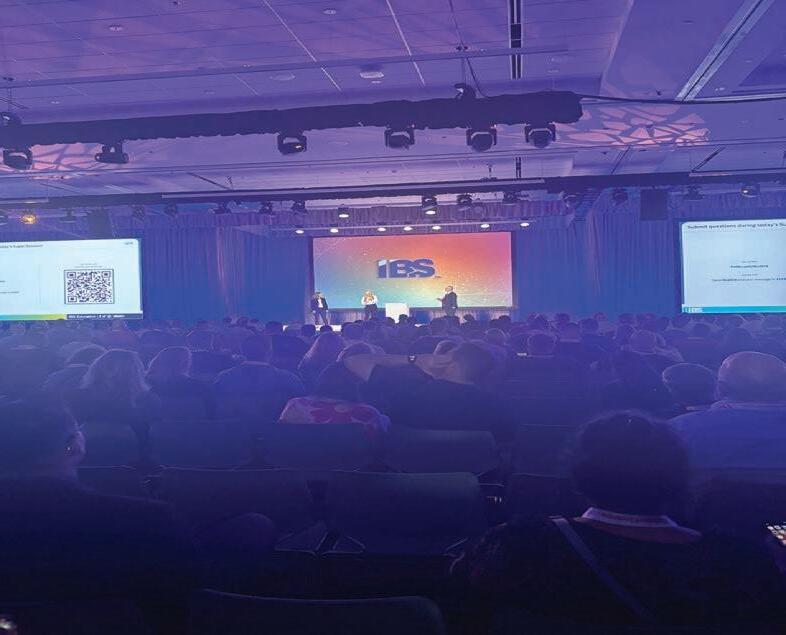



















New
St Paul, MN (651) 224-3675
New Brighton, MN (651) 636-7260
Maple Plain, MN (763) 479-2966
Savage, MN (952) 736-8384
Minneapolis, MN (612) 729-7353
Coon Rapids, MN (763) 757-5077














More than 800 housing industry members came together at Canterbury Event Expo Center in February to explore the latest products and services from 100 exhibitors at the annual Builders & Remodelers Show (BRS). Presented by Housing First Minnesota, the show allows builders, remodelers, architects, interior designers and building o cials from all around Minnesota and surrounding states to connect with the suppliers and service providers.
“Housing First Minnesota’s BRS is an event I look forward to every year! It gives me the opportunity to introduce new product o erings and cover existing products,
catch up with current customers and meet new potential customers,” said Phil Boxwell, a show exhibitor with Schluter Systems.
“ e time commitment is just right, and the return on investment is valuable!”
e event also included four Genius Huddle sessions throughout the day that ranged in topics from cannabis in the workplace to social media marketing strategies.
“Our team always has a great time at BRS,” said Kim Boyer, a show exhibitor with Innovative Surfaces. “ e event is fun and energizing. It is a great way for us to connect with our existing clients and stay relevant and top of mind to prospects.”












CONTINUED FROM PAGE 1
“We talk a lot about building the Housing First Minnesota of tomorrow, and this partnership is an important part of bringing ever-increasing value to our members,” said James Vagle, CEO of Housing First Minnesota. “We’re grateful to the Lennar Foundation for their generous support of our workforce e orts.”
e partnership also was made possible in part through a grant from the Lennar Foundation.
“Our collaboration with Housing First Minnesota is an exciting step toward reshaping the construction workforce, said Branka Minic, CEO of Building Talent Foundation. “By addressing the critical talent shortage, we are not only supporting the industry but also constructing a pathway of opportunity for the next generation. Together, we are fostering an inclusive environment where individuals of all backgrounds can thrive and contribute to Minnesota’s vibrant residential construction sector.”
Building Talent Foundation’s mission is to advance the education, training and career progression of young people and those from underrepresented groups, helping them develop into skilled technical workers and business owners in residential construction.
“ e next generation of our workforce will be presented with an incredible opportunity to build a future with the homebuilding industry,” added Vagle. “Cultivating a skilled workforce is the cornerstone of an e ective construction industry, and through this collaboration, we will deliver the education, training, and networking opportunities to build a stronger future for Minnesota’s residential construction landscape.”




More than 117,000 homebuilders, remodelers, designers and suppliers headed to Las Vegas Feb. 27-29 for this year’s Design & Construction Week (DCW), which features the Kitchen & Bath Industry Show (KBIS) and the International Builders Show (IBS). DCW is the largest annual gathering of residential construction and design industry professionals. is year’s show was the largest since 2009 according to the National Association of Home Builders, which hosts the IBS portion of the event.
is year’s event took over the Las Vegas Convention Center with attendees visiting more than 1,800 exhibitors showcasing the latest housing products. e packed show oor featured 100s of new products and the latest in design and style.
“We are seeing home trends warm up, so we are designing around that. Our IBS demo kitchen really represented that with the rounded oak around the island. Everything is round and soft, and it’s about bringing comfort to the home,” said Summer Kath, executive vice president of design with Cambria.
Minnesotans gather at the show
Minnesota builders, remodelers and suppliers were well represented at the show and gathered at Beer Park for Housing First Minnesota’s happy hour event powered by Pella Windows and Doors. More than 70 members came out to the happy hour to meet with their local trade partners and friends while in Las Vegas.



The Leading Green Building Program in Minnesota
Minnesota’s Green Path is the leading energy-efficiency and green building program for the residential construction industry in Minnesota. Created by Housing First Minnesota in 2011, the program has provided Home Performance Reports (HPRs) to thousands of newly built homes – more than 43,000 homes as of February 2024.
The HPR is at the heart of Minnesota’s Green Path, providing homebuyers with test results from third-party, independent HERS raters in an easy-to-understand and comparable format. Green Path helps homeowners understand the energy efficiency of their homes and gives them the confidence that comes with independent, third-party testing.
GREEN PATH DESIGNATED BUILDER PROGRAM



























Designated Green Path Builders are considered industry leaders in energy-efficient residential home construction. These builders agree to test at minimum 75% of their newly built homes annually and attend professional development events.








Kelly Doran, the gure behind some of the most in uential and high-pro le development projects in the Twin Cities, passed away on Dec. 28, 2023, at the age of 66 after a battle with cancer. His portfolio of projects ranged in scope from high-end, luxury apartments to student housing. At the time of his death, he had completed more than 3,500 multifamily units.
e Duluth native earned an undergraduate and MBA from the University of Minnesota and began his career in real estate with a retail development group. After many years of retail development, he founded e Doran Group in 2007 and began building and developing residential spaces.
“Kelly was larger than life, lived boldly and had a giant heart. He loved to tell stories and laugh, while always seeing the silver lining in any situation,” said e Doran Group in a statement. “Kelly loved to lead in the creation of designs that added to the fabric of the community. e handprints of this work on innovative design are located throughout our communities.”
e Housing First Minnesota Foundation/HomeAid Minnesota, in collaboration with build partner Lennar, handed over the keys of a brand-new four-bedroom home and a one-bedroom accessory dwelling unit nestled in a North Minneapolis neighborhood to the Minnesota Assistance Council for Veterans (MACV) in January.
is home is the fourth completed by the Foundation with partners Lennar and MACV in the last 12 months, and the 11th Housing for Heroes home since the inception of the partnership. is signi cant milestone marks another step forward in the nonpro t’s mission to end veteran homelessness and address the growing need for services within the community.
“We are honored to partner with Lennar and MACV to make these homes and ADUs a reality,” said Meg Jaeger, 2024 president of the Housing First Minnesota Foundation. “ is initiative underscores our shared commitment to giving back to the heroes who have dedicated their lives to serving our communities.”
“With this unique partnership, Lennar and the Housing First Minnesota Foundation have constructed over 30,000 square feet of housing for Minnesota veterans,” said Bill Burgess, president of Lennar Minnesota. “Our collaborative project model combines the housing industry’s expertise, resources and community to work towards ending homelessness in Minnesota.”





James Hardie fiber cement products are Engineered for Climate . For ® ®
James Hardie fiber cement products are Engineered for Climate . For ® ® uncompromising performance, our HZ5 siding and trim are specifically ® designed to resist shrinking, swelling and cracking even after years of wet or freezing conditions. A James Hardie exterior can help keep your homes looking beautiful longer – no matter what nature brings.
James Hardie fiber cement products are Engineered for Climate . For ® ® uncompromising performance, our HZ5 siding and trim are specifically ® designed to resist shrinking, swelling and cracking even after years of wet or freezing conditions. A James Hardie exterior can help keep your homes looking beautiful longer – no matter what nature brings.
performance, our HZ5 siding and trim are specifically ® designed to resist shrinking, swelling and cracking even after years of wet or freezing conditions. A James Hardie exterior can help keep your homes looking beautiful longer – no matter what nature brings.


Contact a sales representative: Kevin Morel | (612) 323-6358 kevin.morel@jameshardie.com

Contact a sales representative: Kevin Morel | (612) 323-6358 kevin.morel@jameshardie.com
©
Contact a sales representative: Kevin Morel | (612) 323-6358 kevin.morel@jameshardie.com ©







Stands up to storms and harsh weather
Water resistant to protect against swelling, warping and cracking; also resists mold damage
Won’t be eaten by animals or insects
Fire resistant
Helps reduce time and money spent on maintenance


Every day our team of professionals is driven to be the best and deliver for our customers. We’re on a mission to develop next-generation solutions that accelerate, optimize and transform the homebuilding industry.
Through the acquisition of Paradigm, a building industry technology leader, Builders FirstSource is uniquely positioned to lead the digitization of our fragmented industry. Together, we will help homebuilders drive e iciency by reducing project costs and increasing labor productivity across the country.

Oak Grove Yard (763)-856-2355
Lakeville Yard
(952)-469-2116
Twin Cities Millwork
(952)-469-3466
Twin Cities Cabinets (763)-856-2355
Oak Grove Components (612)-656-1642
Mankato Yard (507)-387-5608
Montevideo Yard (320)-269-5552
St. Cloud Yard (320)-251-0861
Little Falls Yard (320)-632-9209
Osakis Yard (320)-859-2814
Brainerd Yard (218)-829-2891
Pequot Lakes Yard (218)-568-4040
Wadena Components (218)-631-2607
Detroit Lakes Yard (218)-847-2688
Fergus Falls Yard (218)-736-7537
In a display of generosity and community commitment, Custom One Charities hosted its annual gala, e Mix, on Feb. 17 at A’BULAE in St. Paul. e event provided attendees with an evening lled with philanthropy, entertainment and a celebration of the community spirit.
Dedicated to supporting a brighter future for the community, Custom One Charities focuses on empowering youth through education, mentorship, and community engagement. e annual Gala serves as a beacon of hope, bringing together individuals who share the organization’s dedication to making a positive impact.
e Mix went beyond just a glamorous evening, serving as a powerful fundraising platform. Emceed by WCCO Radio’s Jason DeRusha, the event included live musical entertainment from PopRocks, networking opportunities, and attendees bid on unique items and experiences in live and silent auctions. e proceeds from these auctions will fund charitable programs and extend support to other nonpro ts with similar missions, amplifying the positive impact across various initiatives.
ought leaders and speakers championed the power of community, youth and giving back. Special recognition was given to Meg Hobday at My Very Own Bed, Custom One Charities’ philanthropic partner. e Gala also featured heartfelt testimonials from clients Jessie and Dan Starken, sharing their personal story of impact and gratitude for the support received through a GoFundMe and charity match.






You are invited to a night of generosity to support the Housing First Minnesota Foundation continue its life-changing work of building and renovating supportive housing for veterans and Minnesotans experiencing homelessness. This special evening will include a live and silent auction, signature food and drinks, networking, and giving back to our community.

In February, the Duluth City Council voted to progress the proposed Incline Village, which will be the second largest development project in the city next to the Essentia Hospital. e council granted a tax increment nancing district, or TIF district, for phase one of the three-phase project. e multi-phase development will begin with two 60-unit condominium buildings and a market-rate apartment building with 220 units. e massive, multi-year project will take place on the site of the former Duluth High School and is expected to take 8 to 10 years to complete.
“It’s projected that we’d be looking at 800 to 1,000 jobs at one time in peak construction of this project,” said Je Schiltz, ICS managing partner. e environmental review is expected to conclude in May with construction beginning in June.

Amber Fields in Rosemount makes way for all types of housing
At the end of January, the Rosemount Planning Commission green-lit Maplewood Development’s plan to build an additional 174 townhomes and 167 single-family homes in the already bustling Amber Fields. e development provides a multitude of housing options from established builders Lennar, Pulte Homes, M/I Homes and David Weekley Homes, including townhomes, single-family homes and villas.
“We cannot hope to have the builders be successful here without that kind of variety in product, and that’s what we’re trying to do,” said Mario Cocchiarella, CEO and owner of Maplewood Development, at the planning commission meeting. “And that’s why it has gone as well as it has so far. I think we’ve done a good job of mixing up the di erent product lines.”
Big-D Midwest also broke ground in January on e Landing at Amber Fields. e 160-unit apartment complex will have one-, two- and three-bedroom units and will include an undisclosed number of a ordable units as well. According to a city sta report, Amber Fields will eventually hold 1,959 housing units o ering something for everyone.

